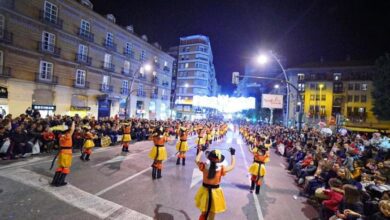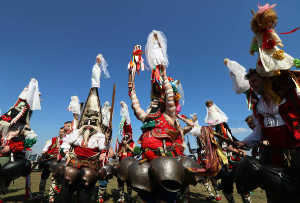
-
Exploring Castilla-La Mancha: Spain’s Historic and Cultural Heartland
Castilla-La Mancha, located in central Spain, is a region rich in history, culture, and natural beauty. Known for its medieval towns, stunning landscapes, and literary heritage, this autonomous community offers a diverse range of experiences for visitors. From the picturesque countryside to the historic cities and charming villages, Castilla-La Mancha is a treasure trove of Spanish tradition and charm.
-
Geography and Climate
Castilla-La Mancha covers a vast area of approximately 79,000 square kilometers, making it one of Spain’s largest regions. It is bordered by the autonomous communities of Madrid, Castilla y León, Extremadura, and Valencia. The region is characterized by its diverse geography, including the rolling plains of the Castilian Manchego and the rugged terrain of the Sierra de Cuenca and Sierra de Alcaraz.
The climate is typically continental, with hot summers and cold winters. The central plains experience extreme temperature variations, with summer temperatures often exceeding 35°C (95°F) and winter temperatures dropping below freezing. The mountainous areas have milder temperatures in summer and can experience heavy snowfall in winter.
-
Cultural and Historical Significance
Castilla-La Mancha has a rich historical legacy that dates back to ancient times. It was a crucial region during the Spanish Reconquista, the period when Christian kingdoms fought to reclaim territory from the Moors. The region is also famously associated with Don Quixote, the iconic literary character created by Miguel de Cervantes. The novel’s depiction of La Mancha—the region where Cervantes set his story—has made it synonymous with Spanish literature and culture.
The architectural heritage of Castilla-La Mancha includes a variety of historical structures, from medieval castles and fortresses to Renaissance palaces and churches. The region is also known for its traditional crafts, including ceramics, weaving, and leatherwork.
-
Top Attractions in Castilla-La Mancha
- Toledo: Known as the “City of Three Cultures,” Toledo is a UNESCO World Heritage Site famous for its rich history and cultural diversity. Its well-preserved medieval architecture includes the impressive Toledo Cathedral, the Alcázar of Toledo, and the historic El Greco paintings that adorn the city’s churches and museums.
- Consuegra: This charming town is renowned for its windmills and castle, which are featured in Cervantes’ Don Quixote. The windmills, set on a hill overlooking the plains, are a picturesque reminder of Spain’s historical windmill culture.
- Cuenca: Known for its hanging houses (casas colgadas) that precariously cling to the cliffs above the Huécar River, Cuenca is a city with a unique architectural charm. The historic old town, with its medieval streets and Gothic churches, is another UNESCO World Heritage Site.
- Campo de Criptana: This town is famous for its traditional windmills, which have been preserved as a tribute to the region’s historical importance in wind power. The windmills, combined with the scenic views of the surrounding plains, make it a popular tourist destination.
- Albacete: Known for its knife-making tradition, Albacete offers visitors a glimpse into its artisanal heritage. The city also features several museums, including the Museo de la Cuchillería, which showcases the region’s craftsmanship.
- El Toboso: This small village is linked to the story of Don Quixote as the hometown of Dulcinea, the novel’s idealized lady love. The village offers a quaint and historical setting, with museums and monuments dedicated to Cervantes’ work.
-
Cuisine of Castilla-La Mancha
The cuisine of Castilla-La Mancha reflects its agricultural roots and traditional flavors. Key ingredients include saffron, pork, and cheese. One of the most famous dishes is pisto manchego, a vegetable stew similar to ratatouille, often served with a fried egg on top.
Another regional specialty is cocido manchego, a hearty stew made with a variety of meats, vegetables, and chickpeas. Queso Manchego, a renowned cheese made from the milk of Manchega sheep, is a must-try. The region is also known for its Vino de la Tierra de Castilla, a local wine that complements the region’s rich culinary traditions.
-
Festivals and Events
Castilla-La Mancha hosts numerous festivals and events throughout the year, celebrating its cultural and historical heritage. The Semana Santa (Holy Week) processions in cities like Toledo and Cuenca are particularly notable, featuring elaborate religious parades and ceremonies.
The Fiesta de la Rosa del Azafrán in Consuegra is a vibrant festival dedicated to saffron, a key ingredient in regional cuisine. The festival includes cultural events, traditional music, and culinary exhibitions.
The Feria de Albacete, held in September, is one of Spain’s largest and oldest fairs, offering a mix of traditional music, dancing, and local crafts.
-
Conclusion
Castilla-La Mancha is a region that offers a rich tapestry of Spanish history, culture, and natural beauty. From the historic streets of Toledo to the scenic landscapes of Cuenca and the traditional windmills of Campo de Criptana, this region provides a diverse array of experiences. Whether you’re exploring medieval castles, savoring local cuisine, or immersing yourself in the literary legacy of Don Quixote, Castilla-La Mancha is a captivating destination that embodies the essence of Spain.

